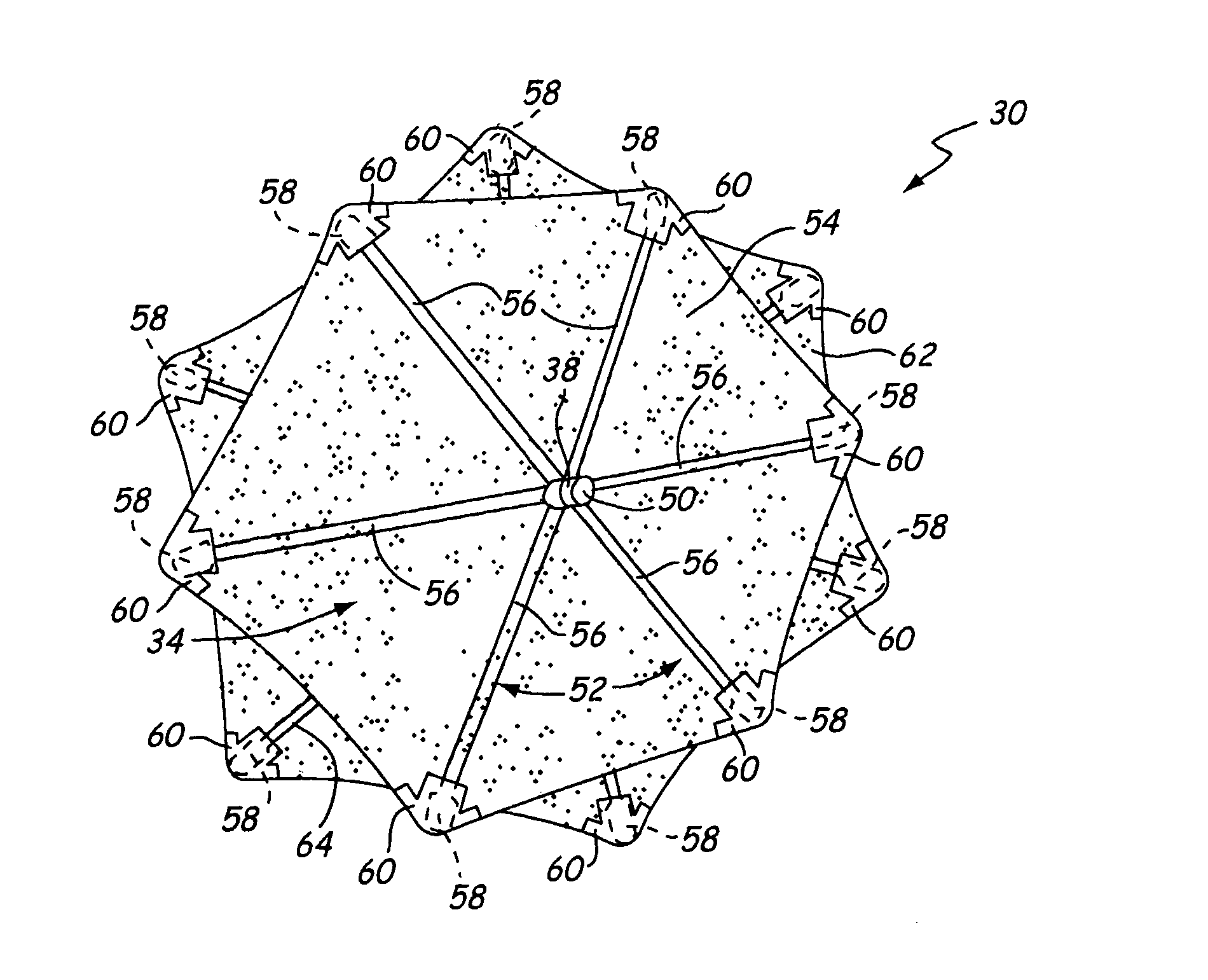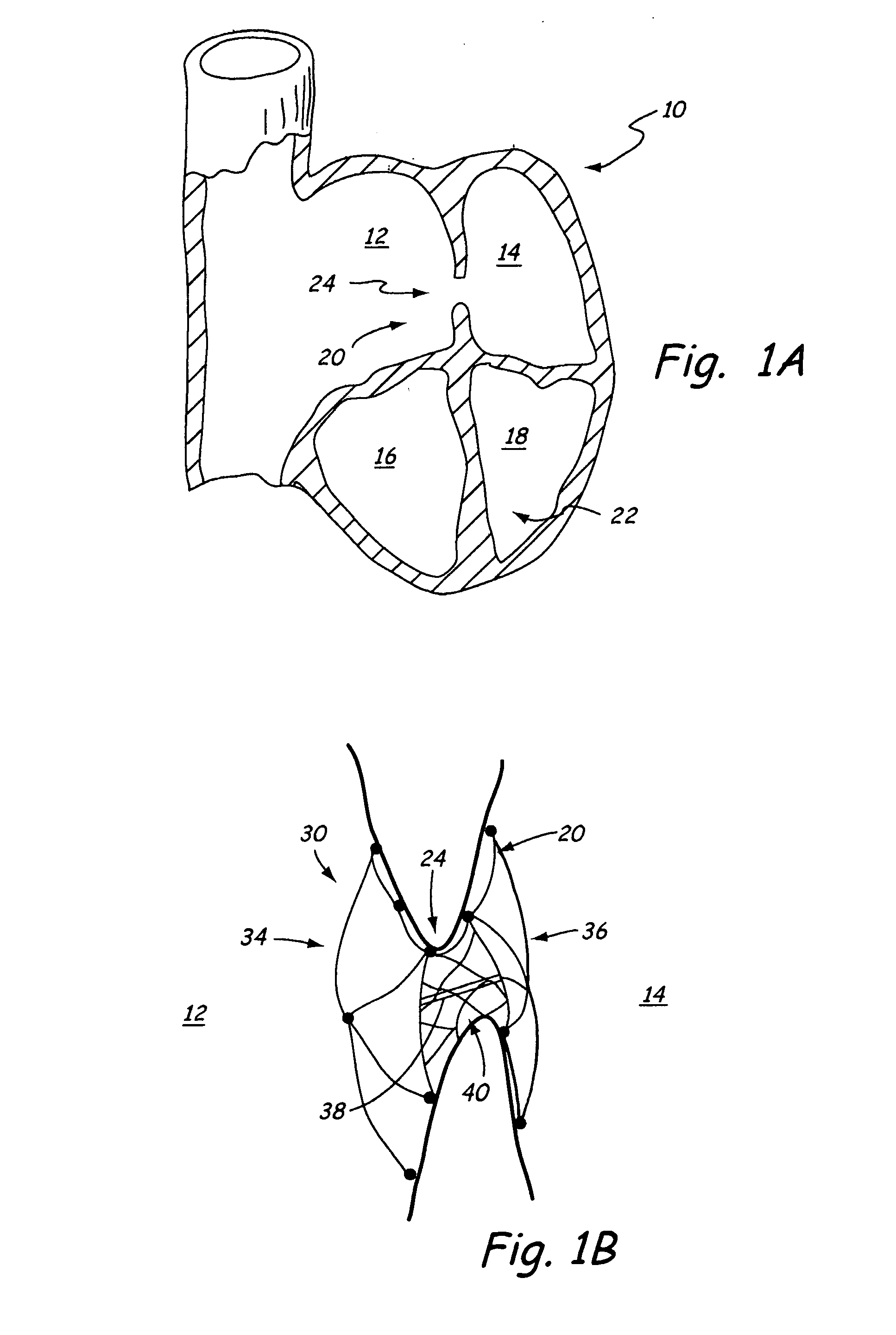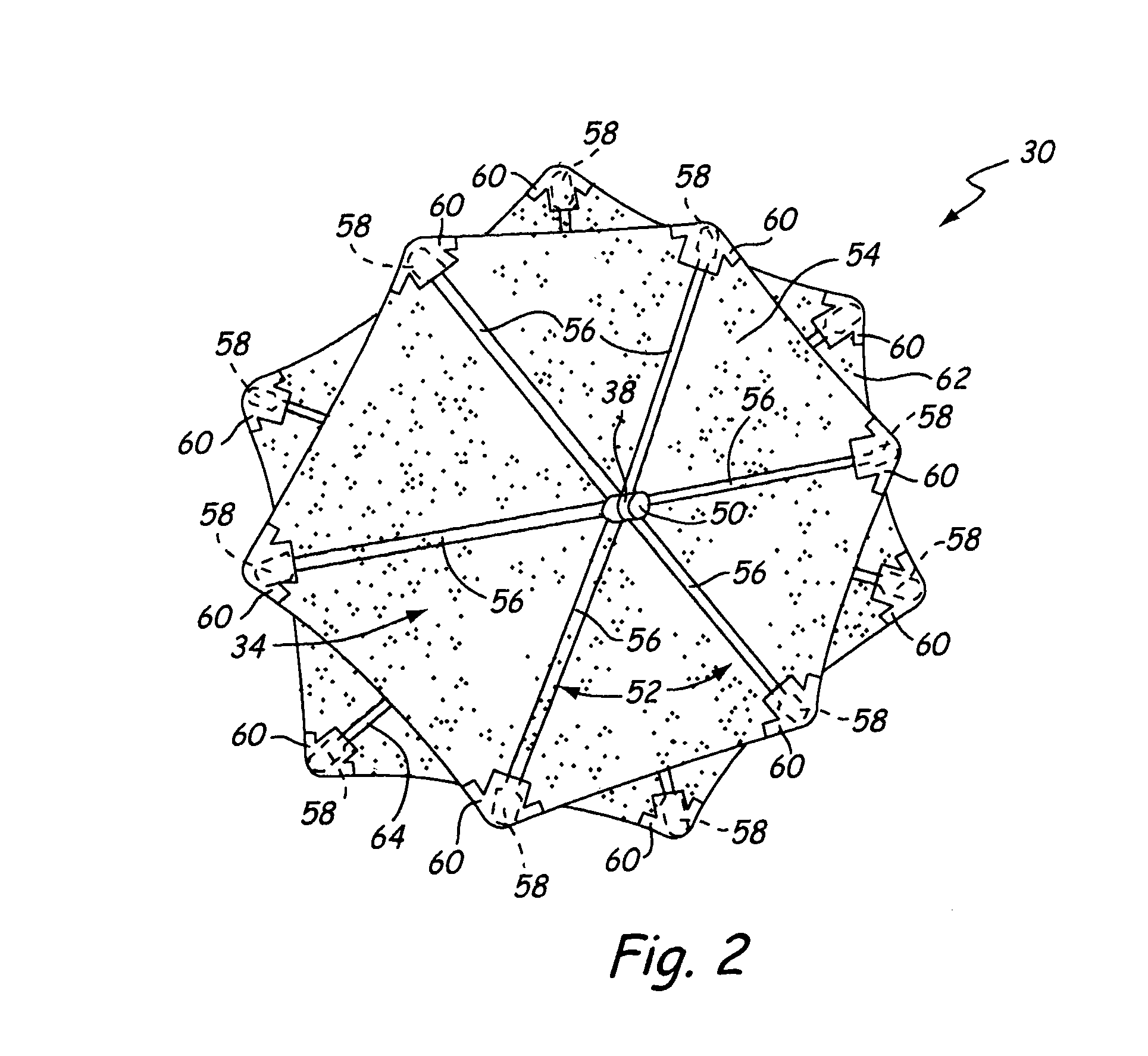Self centering closure device for septal occlusion
a closure device and septal technology, applied in the field of occlusion devices, can solve the problems of varying the size of defects, risky, painful, expensive procedures, and different patients, and achieve the effect of reducing the proportion of apertures exposed and increasing the effectiveness of occluders
- Summary
- Abstract
- Description
- Claims
- Application Information
AI Technical Summary
Benefits of technology
Problems solved by technology
Method used
Image
Examples
Embodiment Construction
[0016] Visible in FIG. 1A is a diagrammatic view of a human heart 10. Visible in FIG. 1A is the right atrium 12, the left atrium 14, the right ventricle 16, the left ventricle 18. The right atrium 12 is separated from the left atrium 14 by a atrial septal wall 20. The right ventricle 16 is separated from the left ventricle 18 by a ventricular septal wall 22. Also visible in FIG. 1A is an atrial septal defect 24 located in the atrial septal wall 20, between the right atrium 12 and left atrium 14 of the heart 10. An atrial septal defect 24 is one example of a cardiac defect that may be occluded using an occlusion device.
[0017]FIG. 1B is a side view of a self centering closure device 30 for septal occlusion in place in a defect. Shown in FIG. 1B is a more detailed view of the septal wall 20 and the defect 24, shown between the right atrium 12 and the left atrium 14. Also shown is an occlusion device 30. As viewed in FIG. 1B, the occlusion device 30 comprises a right or upper side 34, ...
PUM
 Login to View More
Login to View More Abstract
Description
Claims
Application Information
 Login to View More
Login to View More - R&D
- Intellectual Property
- Life Sciences
- Materials
- Tech Scout
- Unparalleled Data Quality
- Higher Quality Content
- 60% Fewer Hallucinations
Browse by: Latest US Patents, China's latest patents, Technical Efficacy Thesaurus, Application Domain, Technology Topic, Popular Technical Reports.
© 2025 PatSnap. All rights reserved.Legal|Privacy policy|Modern Slavery Act Transparency Statement|Sitemap|About US| Contact US: help@patsnap.com



